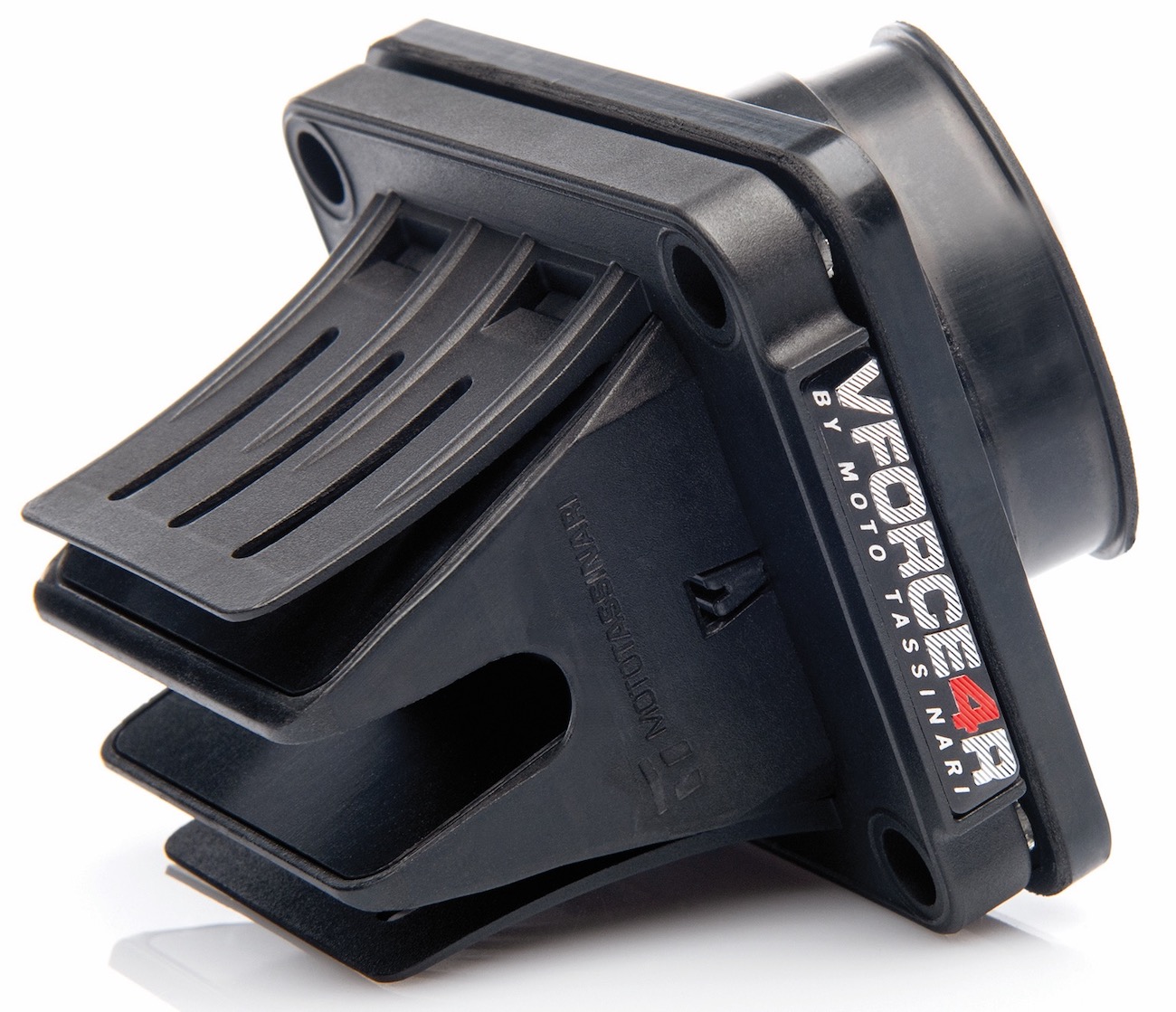MXA TEAM TESTED: MOTO TASSINARI VFORCE 4R REED VALVE
WHAT IS IT? The VForce 4R reed valve system is the next step up from the VForce 3, which was a successful two-stroke reed valve system for over 15 years. With a completely new design that has increased the reed-tip surface by 10 percent, the VForce 4R is able to improve performance and durability for your two-stroke engine.
WHAT’S IT COST? $168.00.
CONTACT? www.mototassinari.com or (603) 298-6646.
WHAT STANDS OUT? Here’s a list of things that stand out with the Moto Tassinari VForce 4R two-stroke reed valve.
(1) How it works. Two-stroke engines suck their fuel/air mixture through the intake tract into the engine when the piston rises, creating a vacuum in the crankcase. As the piston descends, it forces the mixture up through the transfer ports into the combustion chamber. The reed valve’s job is to be a one-way check valve that prevents air/fuel backwash from spilling back into the intake instead of going entirely up the transfer ports.
(2) History. Starting in 2004, the KTM SX two-stroke models came stock with a VForce 3 reed valve system. KTM sourced the Moto Tassinari VForce reed valve until 2014 when they spec’d their own proprietary reed valve, borrowing ideas from Moto Tassinari’s twin-V design and eight petals. KTM copied the VForce 3 valve design and, ironically, started buying Boyesen’s RC2 performance-weave carbon fiber petals for it in 2014.
(3) Concept. The Moto Tassinari VForce 4R reed valve system has an all-new manifold, reed cage and air-guide system, making it completely different from the VForce 3. Additionally, it has an all-new reed petal resin system, which is clearly visible to the eye. The twin-V has an extra stopper on each side. This is used for holding the reeds in place and managing the stress put onto the carbon fiber petals by not allowing them to open too far and accidentally stay open. The reed tip surface has increased by 10 percent over the former VForce 3 systems, which equates to more air flow. New pre-curved reed petals ensure a better seal at the tip, and the frontal area of the central wing has been reduced by 15 percent to improve aerodynamics as well. Additionally, rubber over-molding on the reed tip surface improves reed petal durability.
(4) Performance. The V4R26 model reed valve is compatible for the KTM, Husky and GasGas 125, 150, 250 and 300 two-stroke lineup, and we tested it on our 2021 Husky TC250 two-stroke and KTM 150SX. On the track, we noticed an improvement in the bottom and midrange of the power. The VForce 4 helped the initial throttle feel crisper, but the biggest difference it made was in the midrange. When compared to stock, the extra air flow of the VForce 4R reed valve gave us more power in the middle of the straights. When we went back to stock, it felt “flat” in the middle. We didn’t notice any differences in over-rev, but we did appreciate that it was cleaner and quicker at the bottom and middle of the power curve.
(5) Notes. If you hold your VForce 4R reed valve up and can see light squeaking through, don’t fret. Moto Tassinari explained that’s normal for the VForce 4R, and they designed it that way. If a piece of paper can fit through, that’s okay. If it’s big enough for a credit card, then you have issues.
WHAT’S THE SQUAWK? If we had to complain, we’d say that we expected there to be a bigger improvement from OEM, but that is unrealistic on a KTM or Husky because their stock reed valve system is a Moto Tassinari copy; however, for $168.00, we like it a lot.
MXA RATING: The VForce 4R improves the bottom and midrange. If you want a cleaner throttle response and a stronger midrange, the VForce 4R is for you. More so for Yamaha YZ125 and YZ250 owners than Austrian bike owners.







Comments are closed.